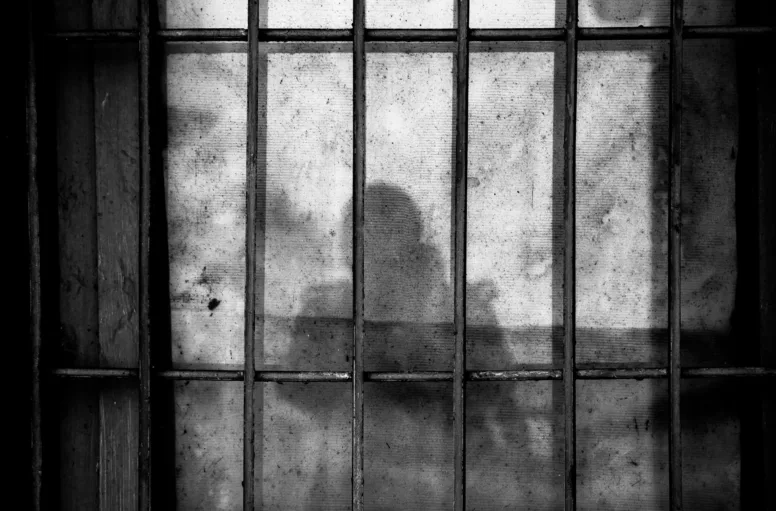Newsletter
This Researcher Studies How Solitary Confinement Harms the Brain
“Individuals increasingly find themselves in cages unfit for lab mice and subjected to conditions with less scrutiny than that of invertebrate species kept in aquariums.”

One hundred and thirty-five years ago, the U.S. Supreme Court acknowledged the devastating effects of solitary confinement. In an 1890 ruling declaring that Colorado had improperly subjected a man named James Medley to isolation, the court noted the practice had deleterious effects on the human psyche, including turning people “violently insane.” The court noted that others committed suicide, while “those who stood the ordeal better were not generally reformed, and in most cases did not recover sufficient mental activity.”
But, in the century and a half since, the court has sidestepped ruling on whether solitary confinement is, in fact, “cruel and unusual punishment.” The practice remains common in U.S. prisons—to warehouse people with mental illness, corral young prisoners, or subjugate people who speak out about conditions.
Since 1890, researchers have only learned more about what this barbaric practice does to the human brain. One of those people is Micaela Romero, a neural systems and behavior researcher in the University of Washington’s ZYWang Lab, who studies the impacts of social isolation. Romero’s incarcerated partner has survived extensive stints in solitary confinement. His experience motivated Romero to show legislators how the practice literally harms the brain and body. To learn more, the Appeal spoke to Romero about what her research can tell us about the carceral state.
This interview has been edited and condensed for clarity.
The Appeal: Can you please tell us what brought you to this work and why the work you do means so much to you?
Romero: My passion for pursuing this research and driving this data to the hearing rooms of the Washington legislature and scientific conferences around the world is rooted in having loved ones who have endured and continue to endure the conditions of solitary confinement. It is their lived experience that serves as the basis of the experiments and neurobiological exploration. This work would not be possible if it weren’t for the incarcerated individuals inside who have been forced into these conditions for years on end—and, in many cases, decades.
TA: Can you talk about your work and share what that looks like with us?
MR: My research in the Wang lab is primarily centered on the impacts of long-term social isolation and reintegration post-isolation. My Lab Director, Dr. Yan Wang, found that isolation in bumblebees led to disruptions in gene expression and brain development, resulting in higher variability of brain structure in isolated juveniles. The results showed that isolated in smaller, congregate settings, the bumblebees were able to maintain typical patterns of brain development and social behavior.
I aim to expand upon her work. My first experiment focused on the mortality and behavioral impacts on adult bumblebees was presented at the Society for Neuroscience in the Fall of 2024, and ongoing research will continue in the Wang and Prat Labs through 2025. The mortality results showed twice as many bumblebees in isolation died as those in group housing, as well as a significant decline in prosocial behavior.
TA: You recently had Washington State Rep. Roger Goodman, chair of the House Public Safety and Reentry Committee, tour your lab at the University of Washington. What was that like?
MR: We were able to start by going in-depth into the care for housing octopuses in solitary confinement. He was able to see the octopuses come out and play and see the humanity that can go into housing people individually, if and when necessary, without undergoing torture. I then gave him the scientific rundown on DOC practices that are not representative of the experience we just had with the octopuses.
We finished by seeing my bees in their isolation cells, with a very less-than-positive vibe. They were in distress. We looked at the metabolic comparisons and visual differences in the bees and talked about future directions.
I left him with areas for improvement that are rooted in lived experience from those inside that aren’t tied to landmark legislation or vast fiscal notes. He seemed very receptive, but I’ve yet to see him become the champion he should be with the information that I’ve given him. I hope to see him rise to that occasion.
TA: Can you talk about the ethics and guidelines for your lab animals, in contrast to how we treat human beings in solitary confinement?
MR: Our lab specializes in the evolutionary neurobiology of aging and mortality across the range of sociality. We house octopuses—highly intelligent, solitary invertebrates—and bumblebees, another invertebrate species capable of complex cognitive ability. However, the bees are a highly social species that rely on a caste of workers and hierarchy for survival.
Bumblebees are generally exempt from institutional animal care and use committees (IACUCs), but researchers are still encouraged to follow ethical practices for their care. Octopuses are subject to formal oversight and ethical considerations due to their complex nervous systems. Universities and institutions throughout the country have offices of animal welfare that review and approve practices to minimize harm and suffering. Social animals must have companionship, mental stimulation, and space that mimics their natural environment. Even when animals are temporarily isolated for a study, they are given enrichment toys, food rewards, and opportunities for post-experiment socialization. Researchers must closely monitor short-term isolation for signs of distress and limit the duration. Extreme social deprivation is considered inhumane and is heavily restricted.
Yet, for prisons in America, distress is by design, and it’s brushed under the carpet and sold to us as “safety and security.” Individuals increasingly find themselves in cages unfit for lab mice and subjected to conditions with less scrutiny than that of invertebrate species kept in aquariums.
TA: Given what you’ve learned, what is the most important thought you’d like to leave our readers with?
MR: My biggest research takeaway was existential rather than scientific. Bumblebees are quite docile, friendly, and critically important to the well-being of our communities. Yet, they get such a bad reputation for the stories people have of when they or others were stung.
I have also found incarcerated and formerly incarcerated individuals to be quite docile, abundantly friendly, and critically important to our communities. They carry important roles in our society, and their loved ones often rely on them for survival. Even though they may have been capable of causing harm at one point, that harm could’ve been caused by a number of underlying reasons that don’t contribute to who they are now.
I want my research to promote reintegration, provide evidence-based approaches to criminal legal reform, and break the barriers for those who have literally been locked away in cages. I want to bring global awareness to the Washington DOC’s practices so that we can champion rehabilitation and criminal legal reform.

ICYMI—From The Appeal
The “crime panic” myth helped local police buy facial recognition software, drones, license plate readers, social media surveillance tech, and more.
Texas incarcerates more than 4,500 people in two-person cells the size of a parking space.
A federal judge said Alabama cannot arrest people who help others leave the state for abortions.
Attorney General Pam Bondi wants to execute Luigi Mangione, the alleged murderer of UnitedHealthcare CEO Brian Thompson.
In The News
The Trump administration admitted in court that it had “mistakenly” sent a Maryland man to a prison camp in El Salvador, but claims it cannot bring him back. [Ben Finley / The Associated Press]
ICE likely deported another person just because he had a crown tattooed on his chest. [Alex DeLuca / Miami New Times]
Edgar Barrientos-Quintana was exonerated for a murder he did not commit—years after he was accused of the killing on the TV show “The First 48.” [Jessica Lussenhop / ProPublica]
The Texas Department of Public Safety is helping pioneer the use of next-generation police artificial intelligence programs. [Francesca D’Annunzio / The Texas Observer]
Florida prosecutors refuse to drop a woman’s arson charges, even though the evidence against her has been discredited. [Liliana Segura / The Intercept]
(Disclosure: Segura is an Appeal board member.)
